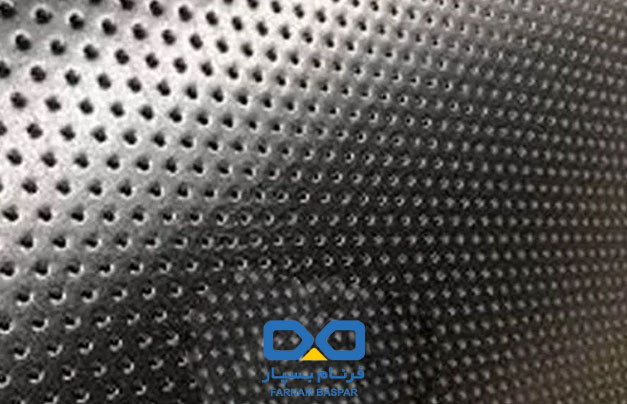Textured geomembranes are a type of geosynthetic material used in various civil engineering and environmental applications. On this page, we provide you with complete information about textured geomembrane price in Iran.
Textured geomembrane price in Iran
The Textured geomembrane cost per square foot can vary depending on the specific application and requirements. You can contact Farnam Baspar to get the textured geomembrane price in Iran.
Textured geomembrane specifications
The following are some common specifications of textured geomembranes:
- Material: Textured geomembranes are typically made from high-density polyethylene (HDPE) or linear low-density polyethylene (LLDPE) resin, which provide excellent chemical resistance and durability.
- Texture: They have a textured surface on one or both sides, which provides increased friction and shear resistance, making them suitable for slope stabilization and other applications where high friction is required.
- Thickness: They are available in a range of thicknesses, typically ranging from 0.5 mm to 2.5 mm, depending on the application and the level of protection required.
- Width: Textured geomembranes are available in a range of widths, typically ranging from 5 m to 8 m, depending on the manufacturer.
- Color: They are typically available in black, although other colors may be available depending on the manufacturer.
- Roll Length: Textured geomembranes are typically supplied in rolls, with roll lengths ranging from 50 m to 200 m, depending on the manufacturer.
- Certification: They are often certified by independent third-party organizations, such as the International Organization for Standardization (ISO), to ensure that they meet industry standards for quality and performance.
Textured geomembrane standards
Here are some of the most commonly used ones:
- ASTM D7176 – Standard Specification for Non-Reinforced Polyvinyl Chloride (PVC) Geomembranes Used in Buried Applications
- ASTM D7408 – Standard Specification for Non-Reinforced PVC (Polyvinyl Chloride) Geomembrane Used in Contact with Soil or Granular Fill Under Concrete Slabs
- ASTM D7633 – Standard Practice for Sampling of Geosynthetics for Testing
- GRI GM13 – Specification for HDPE Smooth and Textured Geomembranes
- GRI GM17 – Specification for LLDPE Smooth and Textured Geomembranes
- GRI GM19 – Specification for PVC Geomembranes
- ISO 9001 – Quality management systems – Requirements
- ISO 9002 – Quality management systems – Particular requirements for the production of textured geomembranes
- ISO 9003 – Quality management systems – Particular requirements for the inspection and testing of textured geomembranes
Farnam Baspar, the top textured geomembrane manufacturer in Iran
Farnam Baspar with more than 20 years of experience, is the top textured geomembrane manufacturer in Iran which offers its products with the best quality and price in the world markets.
Frequently asked questions
How strong is textured geomembrane?
Typically, they are made from high-density polyethylene (HDPE) or linear low-density polyethylene (LLDPE) resin, which have excellent mechanical properties, including high tensile strength and tear resistance. Textured geomembranes have a textured surface on one or both sides, which provides increased friction and shear resistance, making them suitable for slope stabilization and other applications where high friction is required.
When should textured geomembrane be used?
Here are some examples of when they may be used:
- Landfills
- Water containment
- Slope stabilization
- Mining
- Agriculture
How is textured geomembrane installed?
Here are the general steps involved in each method:
- Anchored installation
- Ballasted installation
- Adhesive installation
